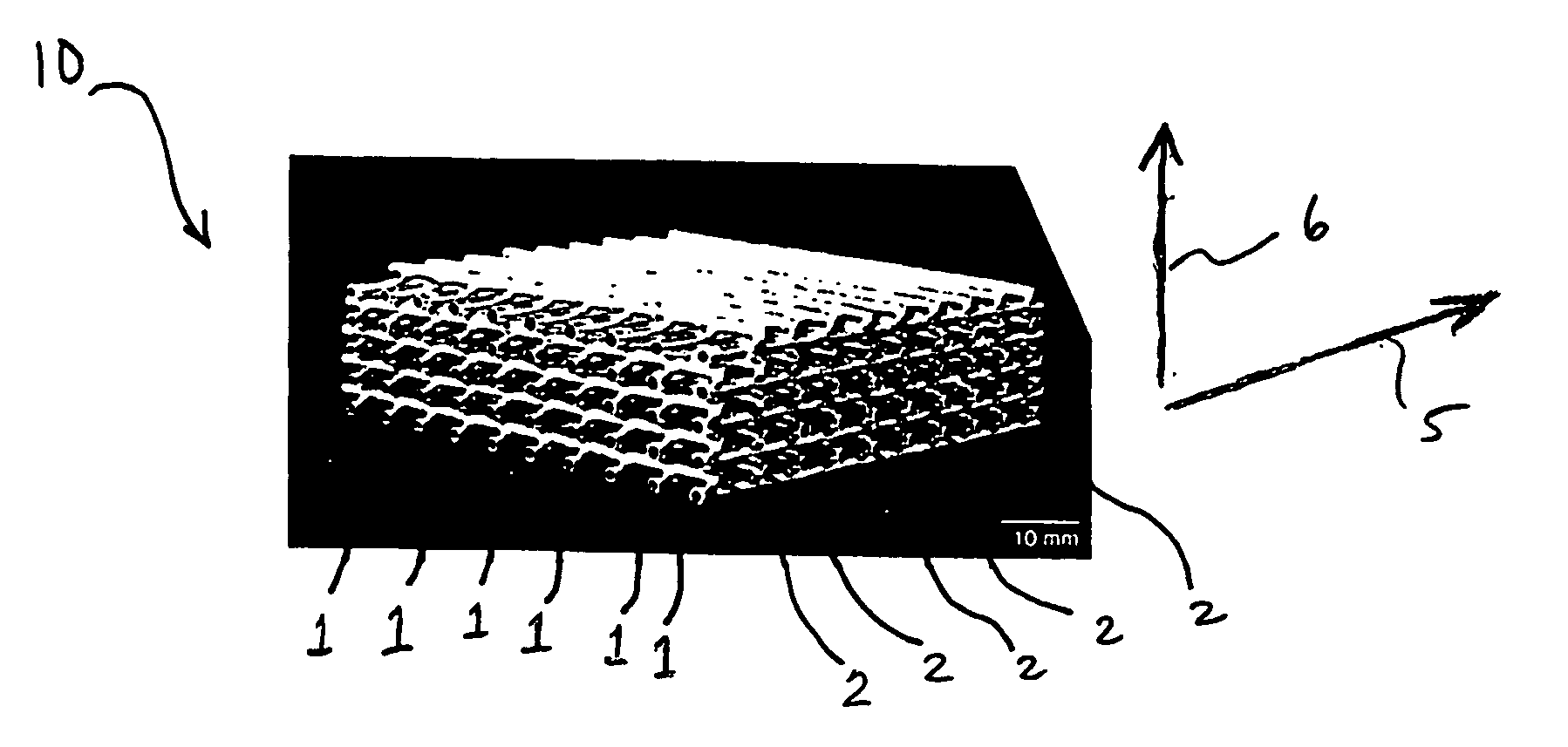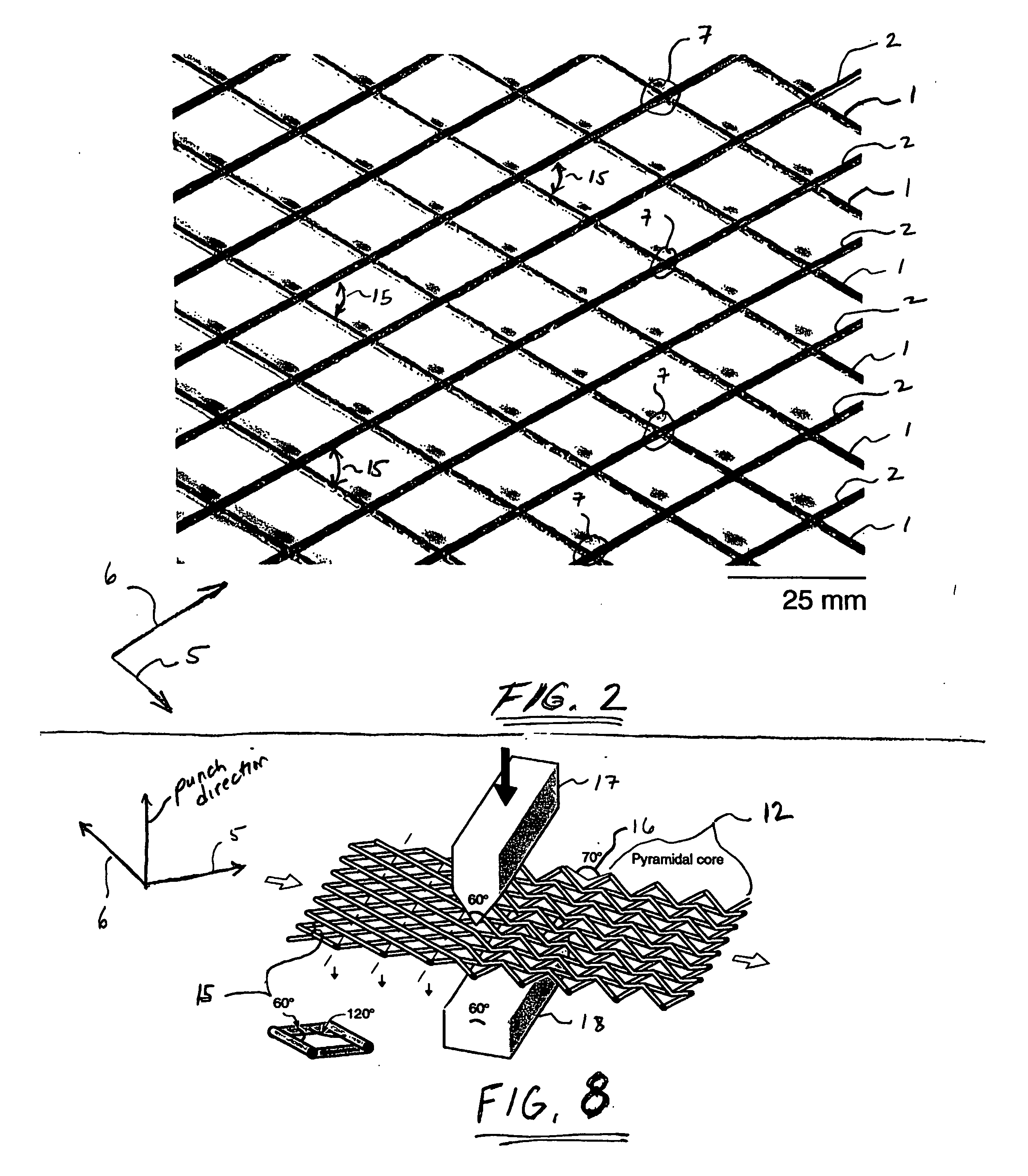Method for manufacture of periodic cellular structure and resulting periodic cellular structure
a technology of cellular structure and cellular structure, which is applied in the direction of thin material handling, construction, building components, etc., can solve the problems of tensile strength, overall load-bearing capacity, and unpredictable bending modulus, and achieve the effect of ensuring the stability of the structur
- Summary
- Abstract
- Description
- Claims
- Application Information
AI Technical Summary
Benefits of technology
Problems solved by technology
Method used
Image
Examples
Embodiment Construction
[0028] Turning now to the drawings, the subject invention, as shown In FIGS. 1, 2, 3, and 4 includes a first array of hollow or solid structural elements 1 oriented along a first axis 5 and in a first plane 3. Upon the first array of hollow structural elements 1 are stacked a second array of hollow or solid structural elements 2 oriented along a second axis 6 and in a second plane 4. As shown in FIGS. 1, 2, 3, and 4 the stacked arrays of hollow structural elements 1,2 are then bonded together at their respective contact points 7. Bonding techniques for attaching the arrays of hollow or solid structural elements 1, 2 may include: brazing or other transient liquid phases, adhesives, diffusion bonding, resistance welding, electron welding, or laser welding. FIG. 2 shows the first two arrays of hollow or solid structural elements 1, 2 from a top view as well as the contact points 7 where the bonding occurs. FIG. 2 also depicts the offset angle 15 between the first array of hollow or sol...
PUM
| Property | Measurement | Unit |
|---|---|---|
| offset angle | aaaaa | aaaaa |
| angle | aaaaa | aaaaa |
| angle | aaaaa | aaaaa |
Abstract
Description
Claims
Application Information
 Login to View More
Login to View More - R&D
- Intellectual Property
- Life Sciences
- Materials
- Tech Scout
- Unparalleled Data Quality
- Higher Quality Content
- 60% Fewer Hallucinations
Browse by: Latest US Patents, China's latest patents, Technical Efficacy Thesaurus, Application Domain, Technology Topic, Popular Technical Reports.
© 2025 PatSnap. All rights reserved.Legal|Privacy policy|Modern Slavery Act Transparency Statement|Sitemap|About US| Contact US: help@patsnap.com



